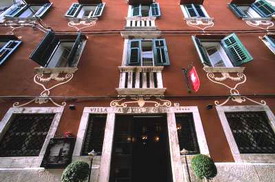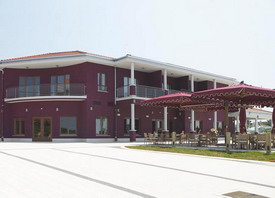|
Istria Umag and Porec continually top the annual poll of best holiday resorts in Croatia...
Pula
Situated near the base of the Istrian peninsula, the population of Pula is just over 62,000, making it the largest city in Istria. One of the most famous sights in the whole of Croatia is the Roman amphitheatre in Pula, which has been well preserved. However, it is likely that Pula originated even before the Roman era, with local findings showing the history of Pula going back more than 3,000 years. As well as being under Venetian rule, Pula also played an important role in the Habsburg Empire as it was proclaimed the chief port of the Empire in 1853, and had a large German and Italian population. In 1915 it was occupied by Italy and the rights of Croatian inhabitants were not respected. It was only in 1947 that it became a part of Croatia in Yugoslavia.
The main sight is, of course, the amphitheatre. Built during the 1st century AD, the three-story amphitheatre is the sixth largest in the world. It hosts the Pula Opera Festival in the summer and is also used for other events during the year. Other sights include the Triumphal arch of the Sergii, the Temple of Augustus, the Cathedral and the Franciscan Church and Monastery.
Umag
Umag and its riviera (which is about 20km long) is very popular. The old town in Umag has attractive and narrow, cobbled streets. The coast is full of pretty little bays and there are some 60,000 hotel beds and those in private accommodation here. There are also many camping and caravan sites along the coast, which are well run and highly recommended for an inexpensive holiday. Umag is also well known for its marina and the international tennis centre which hosts the Croatian Open every July.
Porec
This is the most popular holiday resort in Istria and has frequently been proclaimed the top resort in Croatia by the Croatian National Tourist Office. There are over 100,000 beds available in the area, but hotels and other facilities are widely spread so the place never feels too crowded.
A visit to the old town (Porec is 2,000 years old) is a must, due to its numerous historical sites, particularly the 6th century Euphrasian Basilica which is wonderfully preserved and is well known for its beautiful gold mosaics. The entry to the church is free, although a small donation is much appreciated.
The main tourist areas are two bays south of the town, called Zelena (Green) and Plava (Blue) Laguna (lagoon). They are almost like small towns, with several hotels in each, as well as camping, marina, shopping and entertainment areas. Most visitors stay in one of the two.
Rovinj
This is a charmingly picturesque town with yet more narrow, cobbled streets! It is famous for its St. Euphemia Cathedral with the highest church tower in Istria, at 60 metres high. Rovinj was originally an island, but 250 years ago the narrow channel, which separated it from the mainland, was filled in. It is one of our favourite destinations on the Croatian Adriatic, particularly as it is very lively with numerous cafes and restaurants, galleries and an active fishing port, so in the morning you can watch the fishermen come in as you have your breakfast.
For places to see, definitely go to the cathedral of St. Euphemia (built in 1736) which is the largest Baroque building in Istria, the town's museum and Rovinj Aquarium.
|













